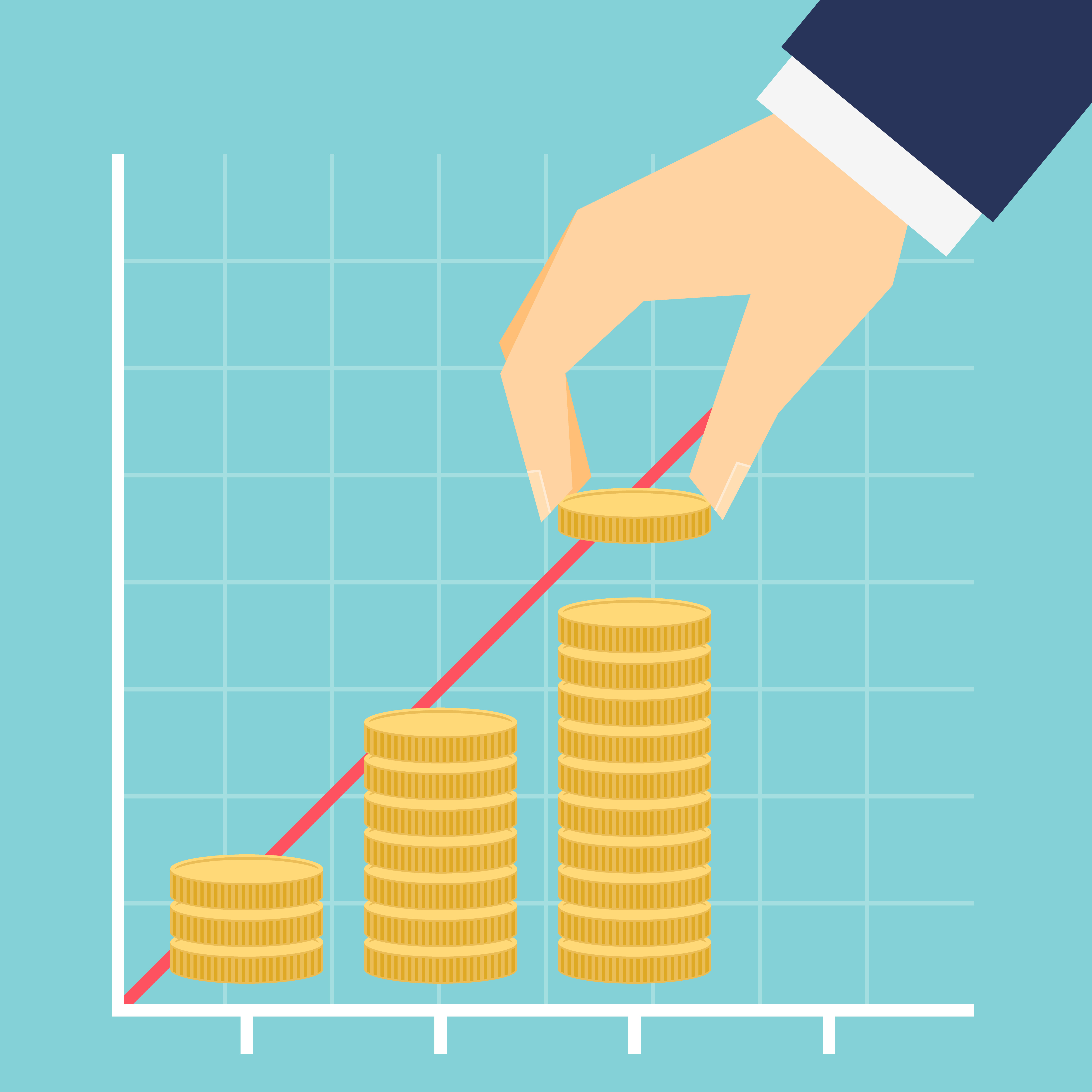Podcast: Download
Subscribe: Apple Podcast Google Podcasts Spotify
Are your paid search efforts going nowhere? Read on to find out how to get bigger and better payoffs from paid search in this Search Engine Nerds episode.
Maddie Cary, Director of Paid Search at Point It Digital Marketing, joins SEJ Chief Social Media Strategist Brent Csutoras to discuss the profitability of paid search and how to ensure your campaigns result in a good ROI. Cary also talks about how brand awareness affects paid search and identifies areas that could have a significant impact on paid search profitability.

What exactly is impression share?
Maddie Cary: Impression share is a look at all the available impression volume you’re targeting within your paid search campaign. It’s capturing how much of the traffic demand you’re going after.
Where it’s tricky is when search engines like Google give you those kind of impression share metrics, they are not a true measurement in the simplest of forms. For example, if you are running a paid search campaign and it’s telling you that you’re capturing 100 percent impression share, what that really means is the impressions that Google thinks you’re eligible to have gotten. So what it thinks you realistically would get based on what keywords you’re targeting, your quality scores, a lot of different factors — you captured 100 percent of those. That doesn’t mean that all the impressions you’re going after, you’re getting every single one, but what Google thinks you’re eligible or able to get, that’s what you’re capturing.
It’s a good metric to help get a sense of what exactly you’re targeting, how much of that are you capturing and consistently capturing over time.
What’s a good number to target and when does it really make a difference in what we do?
MC: I think that’s the balancing act we do as search marketers. It’s an interesting channel to be in because our audience by nature is coming to us and telling us what they want, compared to what you can target within social or even outside of just direct search like demand and display or email. People are coming to a search engine and using queries to indicate what they’re looking for.
I think there is a tendency for particularly newer search marketers to feel that, “Oh, we have this demand. It’s valuable, it’s indicating what people are looking for. I should try to capture all of it.” That’s where we have to remember as digital marketers that there is still data and measure things from a cost per conversion or even an ROI standpoint. Is actually maximizing all of it the right move? Is that going to help you in your profitability?
When I work with clients I generally start by looking at what we’re doing in brand. Brand is a highly valuable demand stream for any advertiser.
Folks who are searching on your brand have not only an association with your brand but likely a positive one. They’re actively searching for you.
Depending on what brand you are, it can be less competitive with lower CPCs. So it’s basically a low-cost investment for high value, oftentimes with highly profitable conversions.
Brent Csutoras: When you say brand, you mean people searching on the brand?
MC: Yeah, so things that specifically contain the company brand in the query. For example, if Amazon was running paid search ads, it would be Amazon or Amazon Prime.
For those terms, there is a lot of value there. If your competition isn’t incredibly intense, so your competitors aren’t bidding on your own brand really aggressively, then it does make sense to maximize impression share. How can you capture the majority of that demand in a way that somewhat “belongs” to you, that is highly relevant to the searchers who are searching on those brand queries?
There can be a lot of value in figuring out how to maximize that, and that might not necessarily be 100 percent, but it could be 90 percent, 95 percent. Also, once you get over the 95 percent mark, you’re essentially at 100 percent. You’re really at the top of what you can maximize. That’s definitely a place where it is worthwhile to consider optimizing to a higher impression share.
If you’re bidding on terms that do not contain your brand name — what we would call the non-brand bucket — or if you’re going after your competitors’ keywords, obviously there’s a lot more folks investing in those spaces. They’re all going after pieces of the same pie. There aren’t necessarily going to be those lower CPCs.
The investment is going to be much higher, and if you’re not careful you can quickly hit a point of diminishing returns where you’re just spending excessively for not much gain. That’s where it’s important to be more fine-tuned. If you are taking an impression share approach to how you’re bidding on those terms, make sure you are being smart about it and not just bidding up to 100 percent for the sake of trying to capture it all.
How do you balance the high brand SERP results you have with the impression share you want?
 MC: I always suggest to clients that opting out of brand for paid search can be detrimental not just to your paid search growth but also to what you’re doing organically. There have been a lot of different studies that measure what the impact is when you have both a paid listing and an organic listing shown on the SERP. The most infamous one is what Google put together a couple years ago that demonstrated doing so added a 50% incremental click lift for advertisers who had both showing, and even demonstrated that if your organic listing is not in the very top spot but is in positions two and three, paid search adds an 80 percent incremental lift.
MC: I always suggest to clients that opting out of brand for paid search can be detrimental not just to your paid search growth but also to what you’re doing organically. There have been a lot of different studies that measure what the impact is when you have both a paid listing and an organic listing shown on the SERP. The most infamous one is what Google put together a couple years ago that demonstrated doing so added a 50% incremental click lift for advertisers who had both showing, and even demonstrated that if your organic listing is not in the very top spot but is in positions two and three, paid search adds an 80 percent incremental lift.
The two play really well together. On top of that, there’s additional benefits that sometimes are a little harder to measure. Having both listings show definitely represents a feeling of authority and at times trust with people searching, that not only do you have a presence organically, but you have one in paid. Those paid results can add a lot of additional bells and whistles that can’t quite be utilized in an organic listing.
Those little things — reviews, phone numbers, click to call, snippets and site links that are specific to search, even different kinds of extensions that help the ad stand out — create some of that authority as well as hopefully optimize the experience you’ve set up in what’s showing in your organic listing.
How can negative keywords lead to massive results in saving money?
MC: The part that pains me the most is when you’ve found a client who cannot figure out how to grow their account, or they know they should be doing something different but they’re not sure what it is, or they’re struggling with profitability, or CPAs are too high, or return is really poor, and you go and look in their negative keywords and you look at their search query reports and you discover that negative keyword management is just not happening on a regular basis, which is the easiest way to cut out inefficient costs.
You have to look at what queries you’re matching to and tell your campaigns what to no longer match to, what’s not relevant, or what’s not cost-effective. The flip side is discovering that some queries they’re matching to is burning through 40-50 percent of their spend so they can’t actually fund the things that are working.
We see it on the Google Display Network, too — display network campaigns that have no negative placements. Those things just aren’t being updated regularly, so it’s one of the easiest wins you can have.
I always equate the search space to putting a net out into a river and hoping to catch fish, but there’s water, rocks and leaves, whatever flowing through. If you don’t check the net regularly, you’re going to pull it out of the water and discover that there’s a giant hole in it. It’s just been completely blown through. That’s our jobs, to check the net.
We’re capturing that demand at the bottom of the funnel via those queries and if you don’t check the net, then you’re not really fishing. You’re not really doing anything effectively.
What other areas could impact profitability?
MC: I think the first thing anyone should do is identify what I call your cash cow. Figure out what are the keywords driving the lion’s share of your conversions, or your revenue if you’re in the e-commerce space. Look at that first and figure out if you’re doing that effectively.
- Are there any opportunities for you to target a different audience on those terms?
- Do testing from copy and landing page perspectives help with click-through rate or conversion rate?
- Is there anything that’s really ineffective cost-wise that you’re doing there? Maybe they’re driving a lot of conversions, but you’re actually not managing your costs in those terms well.
Starting there is the first step that people neglect or they don’t want to touch what isn’t broken. Oftentimes, I suggest having a testing plan and a hypothesis around some of those things. If the results aren’t as good as they were before, then you can revert back to what you were doing before.
The other way to improve profitability is to have regular account health tasks and management — what you’re doing in your account, whether that’s negative keyword mining on a weekly basis or looking at placement targeting and making adjustments there, not doing set-it-and-forget-it bidding. If you have enough conversion volume, leverage AdWords, flexible bid strategies, or even ECPC strategies to drive more conversions at better CPAs.
To listen to this Search Engine Nerds Podcast with Maddie Cary:
- Listen to the full episode at the top of this post
- Subscribe via iTunes
- Sign up on IFTTT to receive an email whenever the Search Engine Nerds podcast RSS feed has a new episode
- Listen on Stitcher, Overcast, or Pocket Casts
Think you have what it takes to be a Search Engine Nerd? If so, message Loren Baker on Twitter, or email him at loren [at] searchenginejournal.com. You can also email Brent Csutoras at brent [at] alphabrandmedia.com.
Visit our Search Engine Nerds archive to listen to other Search Engine Nerds podcasts!
Image Credits
Featured Image: Paulo Bobita
In-post Images: DepositPhotos

![Paid Search: A Focus on Profitability With Maddie Cary [PODCAST]](https://www.searchenginejournal.com/wp-content/uploads/2017/04/Banner_1600x840.jpg)



